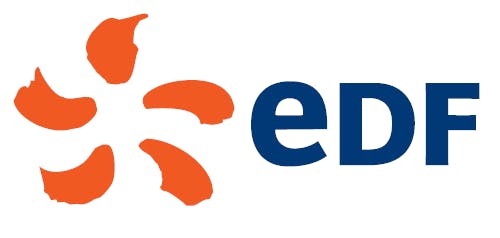1 The Group, Its Strategy And Activities
1.1 Key figures and business model1.1 Key figures and business model
EDF Carbon trajectory
Carbon intensity trajectory
(In gCO2/kWh)
About 5 times lower than the European average.

2020 : 51
2021 : 48
2022 : 50
2030 : 35
2050 : 0
(1) 2021 carbon intensity average of power producers in Europe according to the European Environment Agency (EEA).
EDF, the renewable energy leader in Europe
Net installed renewable capacity by sector at end-2022

36GW
Other⁽²⁾ : 0.2GW
Solar: 3.6GW
Wind : 9.6GW
Hydropower⁽¹⁾ : 22.6GW
(1) Including sea energy: 0.24GW.
(2) Biomass, geothermy.
Key figure 2022
Installed capacity(1)

This diagram shows the installed capacity⁽¹⁾.
116.9GW
Hydropower : 18%
Other EnR : 9%
Gas : 10%
Coal : 2%
Fuel Oil: 3%
Nuclear : 58%
(1) Consolidated data.
Electricity generation(1)

This diagram shows the electricity generation⁽¹⁾.
431.7TWh
Hydropower⁽²⁾ : 8.2%
Other EnR : 5.7%
Gas : 8.5%
Coal : 0.4%
Fuel oil: 1.2%
Nuclear 76.0%
Decarbonised⁽³⁾ : 90%
(1) Consolidated data.
(2) Hydro output including pumped storage consumption and sea energy.
(3) Direct output-related CO2 emissions, excluding life-cycle analysis (LCA) of fuel and production means.
Net investments excluding disposal plan

This diagram shows the electricity generation⁽¹⁾.
€16.4bn
Renewables : 2,2
Services : 0,6
Other⁽¹⁾ : 1,0
New nuclear : 2,9
Framatome : 0,3
Flamanville 3: 0,3
Nuclear maintenance (France, Belgium and UK) including Grand Carénage: 4,7
Enedis, IES and ÉS : 4,4
(1) Mainly thermal maintenance, gas, property, central functions.
NB : Values are rounded.
